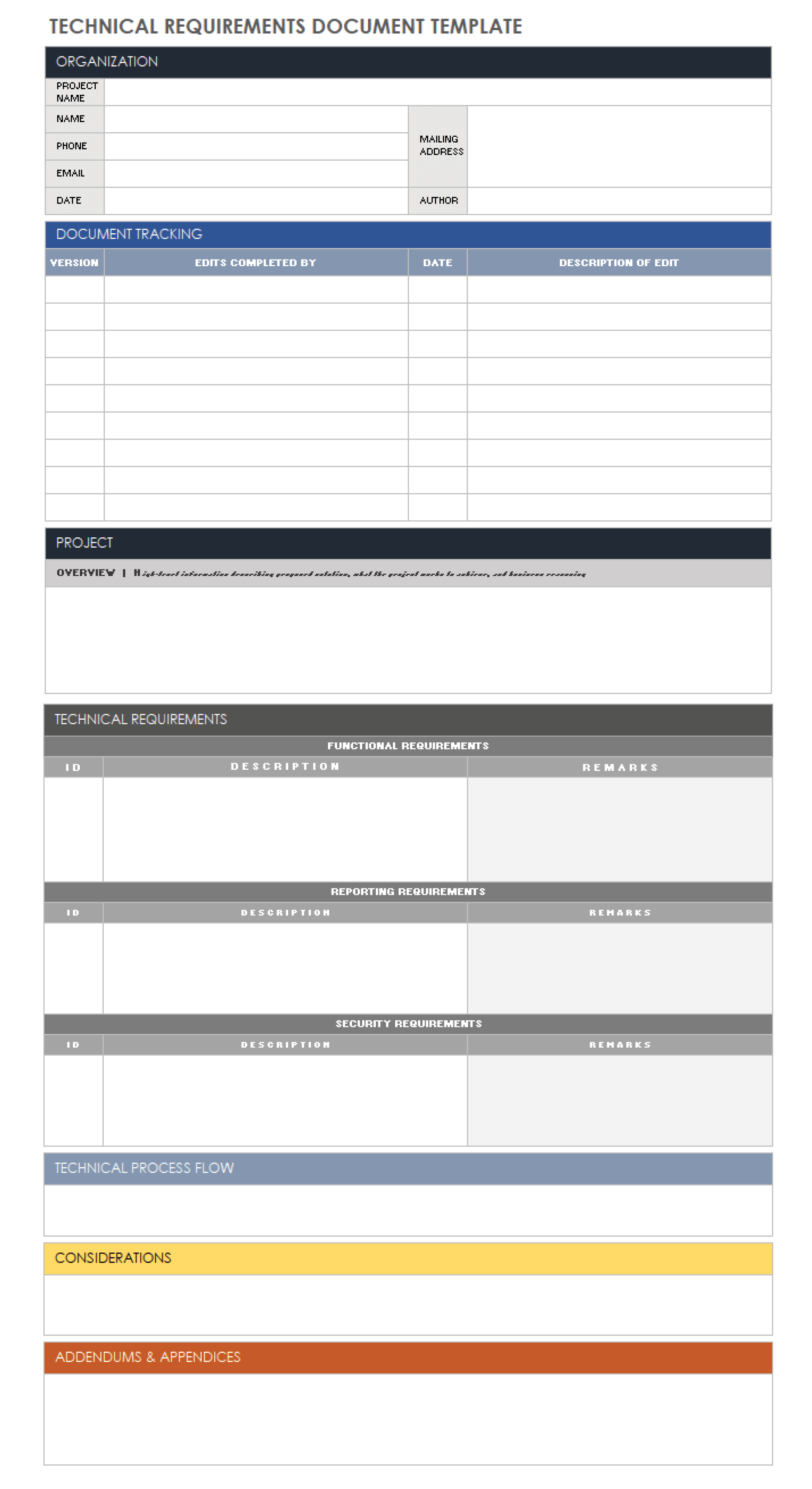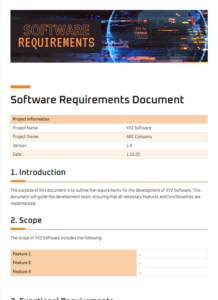Are you working on a complex project that requires specific technical specifications? A technical requirements document (TRD) can help you define and communicate these requirements effectively. In this article, we will dive into the world of TRDs, providing you with a comprehensive sample template to guide you in creating your own.
A TRD serves as a roadmap for your project, clearly outlining the functional and non-functional requirements that your technical solution must meet. By defining the scope, performance, reliability, security, and other critical aspects, you ensure that everyone is on the same page and working towards a shared vision. Additionally, a TRD can help you manage expectations, prevent misunderstandings, and streamline the development process.

Creating a Sample Technical Requirements Document Template
To create a robust TRD, follow these steps:
- Gather requirements: Collect input from stakeholders, including users, developers, architects, and testers, to determine the specific needs and expectations.
- Analyze requirements: Examine the gathered requirements to identify dependencies, conflicts, and missing information. Prioritize the requirements based on their importance and feasibility.
- Document requirements: Use the sample TRD template provided below to structure your document. Clearly state each requirement, including its purpose, constraints, and acceptance criteria.
- Review and validate: Share the draft TRD with stakeholders for review and feedback. Make necessary revisions to ensure accuracy and completeness.
- Finalize and publish: Once the TRD is finalized, distribute it to all relevant parties to serve as the official reference for the project.
Sample Technical Requirements Document Template
The following sample TRD template provides a comprehensive framework for documenting technical requirements:
- Introduction: Provide an overview of the project and its goals.
- Scope: Define the boundaries of the project, including what is and what is not included.
- Functional requirements: Describe the specific tasks and functions that the system must perform.
- Non-functional requirements: Specify the performance, reliability, security, maintainability, and other quality attributes.
- Design constraints: Identify any limitations or restrictions that apply to the system design.
- Acceptance criteria: Define the specific criteria that must be met for the system to be considered acceptable.
- Glossary: Define any technical terms or acronyms used in the TRD.
Conclusion
A well-crafted technical requirements document (TRD) is essential for the success of any complex project. By using the sample template provided above, you can ensure that your TRD is comprehensive, clear, and effective. Remember to gather and analyze stakeholder requirements carefully, document them in a structured manner, and review the TRD thoroughly before finalizing it. A solid TRD will serve as a valuable guide throughout the project lifecycle, ensuring that everyone is working towards the same goals and that the end result meets the desired specifications.
Whether you’re developing a new software application, implementing a network infrastructure, or designing a complex manufacturing process, a TRD will help you lay the foundation for a successful project outcome.


